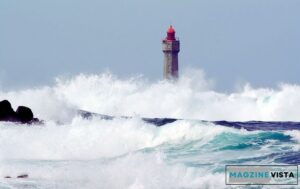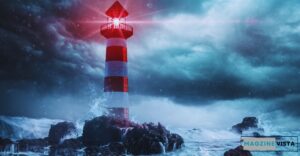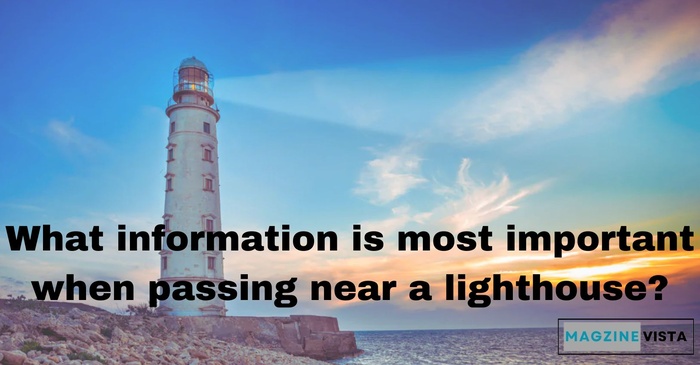Read a complete article to know What information is most important when passing near a lighthouse boatus? Lighthouses were the only means of navigation available to seafarers until recently when there were numerous sophisticated navigational aids. The lighthouse is still crucial for navigation, though. Every lighthouse has an information chart that shows the position of the lighthouses as well as the sea depth. An experienced sailor can navigate even without modern instruments with the help of these details.
Pay attention to the lighthouse beacon and any instructions or warnings that the Coast Guard or other maritime authorities may have given when traveling close to a lighthouse. It’s also critical to know the lighthouse’s location and any potential dangers nearby, such as shallow seas or rocky outcroppings. It’s also crucial to abide by any stated laws, such as those prohibiting anchoring in certain areas or setting speed limits.
What information is most important when passing near a lighthouse?

Let’s know What information is important when passing near a lighthouse:
- Lighthouses can be identified by their different lights. This aids individuals in differentiating between several lighthouses.
- The light also has the feature of flashing and occulting. A longer duration of darkness and a shorter duration of light are called flashing.
- A light that flashes lasts one second every five seconds. The second quality is occulting.
- Occulting is the reverse of flashing. When the light lasts longer in the occulting than it does in the dark. An “occulting” feature is a light that dims for one second every five seconds.
- A lighthouse is distinct from other objects because it combines its color with an occulting or flashing characteristic.
- This is how a lighthouse is constructed, and this is how it looks. Let’s go on to the following subject. A lighthouse can save a ship.
- Shallow waters are not always present in the vicinity of lighthouses. There could be kilometers of shallow waters there.
The location of a lighthouse is the most critical information to learn when passing close to one. This is crucial since you can determine your overall location and direction based on the lighthouse’s location. Going to a lighthouse: You must first ascertain your location. You are in the vicinity of a lighthouse if you are visiting one. For instance, the Cape Cod Lighthouse is nearby if you’re close to Cape Cod. The Oregon Lighthouse is close by if you’re on the Oregon Coast. Use your navigation software to find your whereabouts if you’re passing a lighthouse and need clarification on its location. The GPS on your phone allows you to determine your precise location. You can also use your GPS to obtain a sense of where you are and where you’re heading.
What is a lighthouse?

The idea of a lighthouse dates back to the sixteenth century. These lighthouses have a height of 120–130 feet. There are two different kinds of lighthouses: tiny and large. Significant lighthouses feature light sources with 30–40 meters of tails, whereas small lighthouses have lights with 10–20 meters of tails. Ships and other watercraft use these lights as a navigational aid while departing one nation and entering another. Even so, 90% of trade today occurs across seas and oceans, where lighthouses are a practical means of navigation.
The most intriguing fact is that the lighthouse is built in a region of the ocean that is thought to be the most dangerous for ships, boats, and cargo. Lighthouses offer two kinds of lighting patterns: occulting and flashing.
When a lighthouse flashes, it illuminates a limited area for a prolonged time—that is, one second of light followed by another of darkness. The exact reverse, or long-time light and short-time darkness, is occulting. The wavelengths of light given by lighthouses aid ship and vessel operators in identifying potential collision hazards such as rocks and shallow water.
How to Go on Upon Arriving at a Lighthouse
Checking the weather is the first thing you should do when you arrive at a lighthouse. What information is most important when passing your lighthouse. Wait until it’s safe to continue sailing if it’s terrible. Proceed with your cruise, paying close attention to the lighthouse if everything is in order.
When sailing close to a lighthouse, take extra care to avoid the rocks. It might be challenging to sail close to a lighthouse, mainly if rocks are in the area.
When sailing in these places, exercise caution since rocks can quickly cause damage to a boat. The following advice can help you steer clear of rocks as you sail past a lighthouse:
- Remain alert and watch out for any potential risks or pebbles in the vicinity.
- When maneuvering your boat, exercise caution and refrain from abruptly changing course.
To protect yourself and the people around you, it’s critical to be aware of the following information when passing a lighthouse:
- Location of the lighthouse: The lighthouse is situated in a critical area. It is perched atop a cliff with a view of the sea. This gives it the ideal location for alerting seafarers to the potentially harmful rocks below.
- The lighthouse signal: Sailors find solace in the sight of the lighthouse signal, which they can see for miles. The signal, which consists of a bright light flashing in a predetermined sequence, aids in guiding ships into ports securely.
A Few Things To Remember When crossing A Lighthouse

Let’s know What is most important when passing a lighthouse. We describe few important things below:
- The majority of lighthouses are found in regions with strong currents. Therefore, pay attention to the water’s conditions when approaching a lighthouse.
- The foghorn should always be heard when it sounds.
- A horn alerts ships and other boats at sea to the dangers of foggy weather.
- The light that emanates from a lighthouse is intense and dazzling, so be cautious to avoid it.
Random Facts About Lighthouses
The following is a compilation of some of the most bizarre lighthouse facts:
- The oldest lighthouse in existence is located in Sandy Hook, in America.
- The tallest lighthouse in the world is located in North Carolina at Cape Hatteras. It is 200 feet tall overall. It was constructed in 1872.
- Lighthouses are constructed from granite, wood, brick, steel, cast iron, and, in some instances, aluminum for the outside skin.
- Before 1884, lighthouse keepers were not required to wear uniforms.
- While there were female lighthouse keepers as well, most of them assumed this responsibility upon the death or incapacitation of their husbands.
- Even though these towers appear similar, closer examination will reveal that they are not precisely the same. Their exterior walls are painted in various patterns, such as spirals, diamonds, and stripes.
- America’s St. George Reef lighthouse is the most expensive lighthouse ever constructed. It took roughly ten years to complete the construction.
Do We Still Need Lighthouse?
You now understand “What Data Is Most Vital While Driving By A Lighthouse.” The following query arises whether lighthouses are still necessary in the modern world.
The Congress enacted the Lighthouse Act on August 7, 1789. At that time, the newly formed federal government launched its first public works initiative. As a result, August 7 is currently recognized as National Lighthouse Day in the United States.
The principal lighthouse locations are steep ocean cliffs, bay and harbor entrances, and sandy shoals on land. While many lighthouses continue to help mariners, most have been superseded by NOAA’s Nautical Charts, the Global Positioning System, buoys, radar beacons, and illuminated navigational aids.
In the end, there is no denying the significance of the lighthouse, yet as technology advances, it is becoming outdated.
FAQs
Why is a lighthouse important?
Mariners use them to avoid shallow water and rocky shores and help boats get into and out of ports safely.
How can you find your location with a lighthouse?
Identify the unique blends of long and short horn blasts unique to every lighthouse.
It functions as a flashlight and enables ships and boats to see land even when they are far out at sea.
How does a lighthouse warn sailors?
Many structures have bells and horns that go off regularly to inform sailors about obstacles and give them more direction.
What info is most important when passing a lighthouse?
The water level is the most important thing to know when you’re close to a lighthouse.
What information is most important when passing near lighthouse?
When approaching an area with a lighthouse, the water depth is the most essential piece of information to have.



